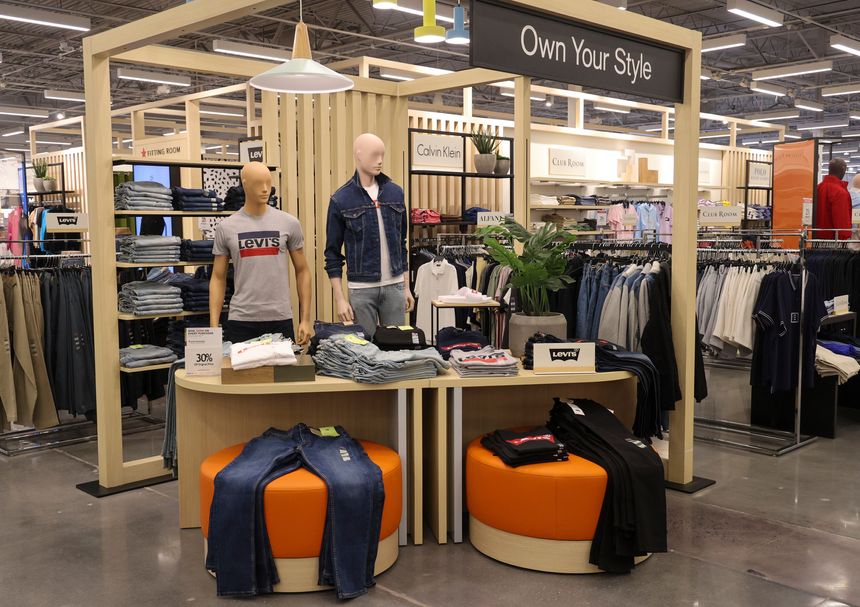
Meanwhile, Macy's Inc. is rolling out new dresses, suits, boots and other fall fashions. More than half of its offerings for the holiday season will be new. The department store giant has so far avoided the worst of the glut of goods that has tripped up so many retailers. Its inventory was up 7% at the end of its most-recent quarter compared with a year earlier. That is in contrast to a 48% jump at Kohl's, 44% at Nike and 37% at Gap Inc.
Macy's and other U.S. chains face an uncertain holiday season with high inflation prompting consumers to pull back on some discretionary purchases. "I'm going to be more careful in what I buy this year," said Sharon Geltner, of Boynton Beach, Fla. "I want to make fewer impulse purchases."
Macy's credit-card data early in the year revealed cracks in shopping trends, executives said, so they cut back on some merchandise orders. "We're not doing pack-and-hold," Macy's finance chief Adrian Mitchell said, referring to a practice that is becoming common of storing unsold inventory until the following year. "We don't have the inventory to pack away."
Some retail executives said they were surprised at how quickly consumer spending shifted this past spring as the Covid-19 pandemic receded, people started traveling and dining out more and inflation made everything from gas to groceries more expensive.
"We thought there was going to be a stronger recovery into 2022 and we wanted to be positioned for that," said Jill Timm, the finance chief at Kohl's .
Kohl's placed large orders earlier in the buying cycle for 2022 after missing out on about $250 million in sales in 2021 because it didn't have enough merchandise due to temporary factory shutdowns and shipping delays that slowed the arrival of winter goods. Some of those goods made it to stores and warehouses this year, just as consumers started to curtail their purchases.
Early this year, Macy's executives noticed an uptick in the amount consumers were spending on food and gas, the result of rising inflation, on the company's co-branded credit cards that shoppers can use at other retailers. They also detected a shift as consumers began spending more on travel and entertainment outside the home.
They sifted through data showing inflation was outpacing wage growth for many workers among other economic indicators that suggested some discretionary categories like apparel would get squeezed, Mr. Mitchell said.
A group of executives from the finance, supply chain, merchandise and planning departments discussed the changes in late January -- the first of a series of monthly meetings that Macy's started holding this year to ensure its senior leaders are on the same page when it comes to forecasting demand and ordering supply.
The group decided to cut orders of comfy clothes and items for the home that had been big sellers during the pandemic, and increase orders of dresses, suits and shoes for wearing outside the house, to return to work and for occasions like weddings.
"The key question was, how do we get the right composition?" Mr. Mitchell said . "Where do we need to pull back in certain brands and where do we need to add?"
Macy's had an easier time making those adjustments than some other retailers that sell more private-label goods. Less than a fifth of Macy's sales come from private-label, compared with about a third at Kohl's and nearly everything sold at specialty chains like Gap and Old Navy.
It's harder to cancel private-label orders, because retailers take ownership of the goods earlier in the production cycle, executives said.
Kohl's, for instance, owns private-label goods as soon as they are loaded onto cargo ships, Ms. Timm said. With ships taking longer to make their way across the ocean and through ports, Kohl's had $269 million of goods in transit during the quarter ended July 30 that it owned but wasn't on its sales floors.
Ms. Timm said Kohl's inventory also swelled because it's in the process of stocking newly opened Sephora shops inside its department stores.
An analysis by Citi retail analyst Paul Lejuez found that the gap between Macy's inventory and sales improved in the second quarter, while it worsened at Kohl's.
Nike also relied on ocean shipping to move much of its goods from factories in Asia to stores around the world. Last week, Nike executives said the amount of in-transit inventory was up 85% from year-ago levels. They said inventory piled up because orders that had been delayed from past seasons arrived at the same time as early holiday orders.
Macy's didn't navigate the shift perfectly. It says it wound up with too much in certain categories this spring such as activewear, casual sportswear, pajamas and housewares that had been strong sellers during the worst of the pandemic.
But it's moving quickly to clear out the excess with the help of data analytics that target slower selling items with steeper price cuts. For example, if Macy's has 20 blue cashmere sweaters in a Los Angeles store and is selling one every other week, it will discount the sweaters more at that store than the same ones in a New York store that is selling two a week, Mr. Mitchell said.
Ms. Geltner, the shopper in Florida, said she found great deals on gym clothes on a recent trip to the Macy's near her home but fewer discounts on other things like shoes and handbags. "They didn't have a glut of handbags," she said, "and the discounts were more sporadic."
Comments